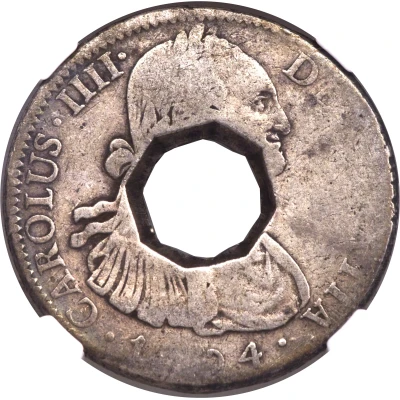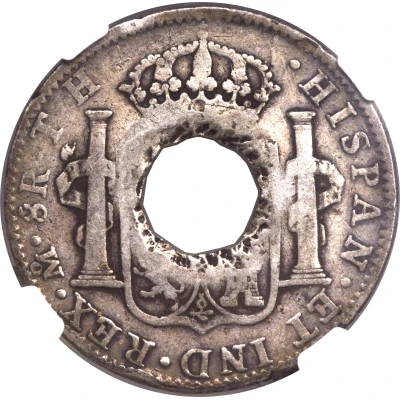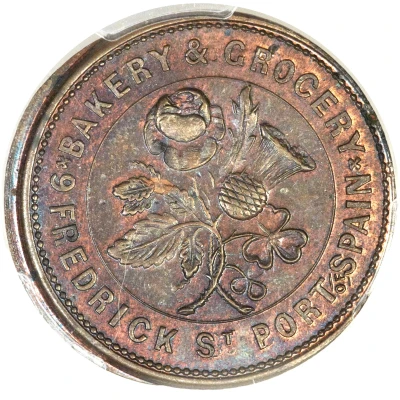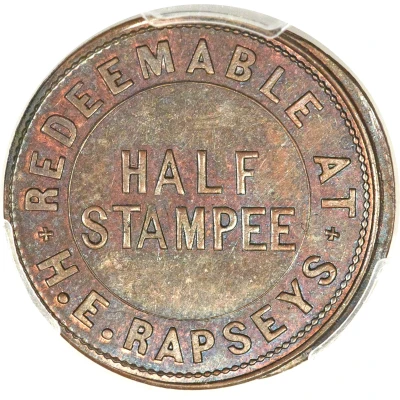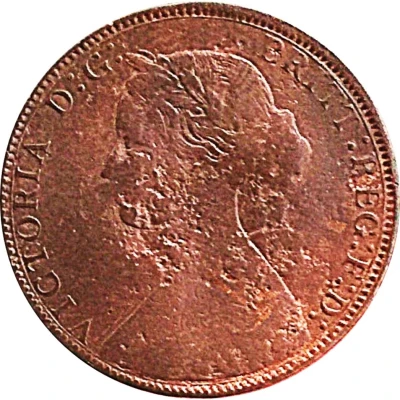
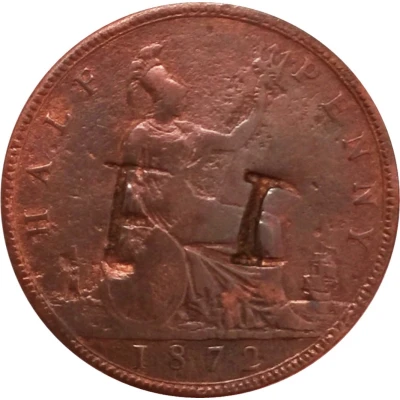

© Mark240590
½ Stampee François Duclos ND
| Bronze | 5.7 g | 25.4 mm |
| Issuer | Trinidad (Trinidad and Tobago) |
|---|---|
| Type | Token |
| Years | 1854-1874 |
| Value | ½ Stampee |
| Currency | Dollar (1811-1825) |
| Composition | Bronze |
| Weight | 5.7 g |
| Diameter | 25.4 mm |
| Thickness | 1.3 mm |
| Shape | Round |
| Technique | Milled, Countermarked |
| Orientation | Medal alignment ↑↑ |
| Demonetized | 1874 |
| Updated | 2024-10-08 |
| Numista | N#80456 |
|---|---|
| Rarity index | 85% |
Reverse
Counterstamp on Host coin (Britannia seated Right)
Script: Latin
Lettering:
HALF PENNY
FD
1872
Edge
Plain
Comment
François Duclos was a baker in Port-of-Spain, Trinidad, who stamped his initials on various halfpenny-sized coins. The value of the countermarked coins was ½ stampee = 1¼ cents. This greatly facilitated the buying and selling of the "half-stampee loaf" of bread until the colonial government forbid the countermarking of coins in 1874.Duclos' scheme was so successful that many imitated him and put his initials on coins. There is, therefore, a wide variety of styles of the punch letters.
Many host coins for Tn#1.1 exist including:
- US 1 cent
- Canadian bank and merchants' ½ penny tokens
- East India company ¼ Anna
- France 5 Centimes
- French Colonies tokens
- Venezuela 1 cent
The weights of the hosts vary between about 5 and 10 grams.
For some reason, the Krause World Coins 1801-1900 catalog lists H.E. Raspey's ½ stampee token separately as a host (Tn#1.2). Rapsey was a baker and grocer on Fredrick street in Port-of-Spain.
Interesting fact
One interesting fact about the Token ½ Stampee (François Duclos) ND (1854-1874) from Trinidad (Trinidad and Tobago) made of Bronze weighing 5.7 g is that it was used as a form of currency in Trinidad and Tobago during the 19th century. The coin was introduced by François Duclos, a French businessman, and was used to facilitate trade and commerce in the country. Despite being made of bronze, the coin was valued at half of a stampee, which was the standard unit of currency in Trinidad and Tobago at the time. This coin is a unique piece of history that highlights the diverse currency systems that have been used in different parts of the world.
